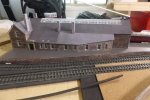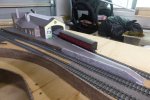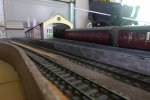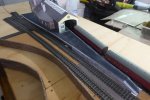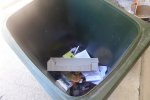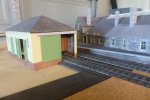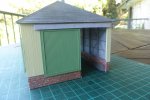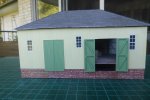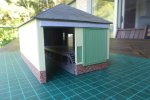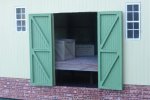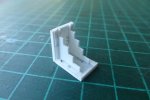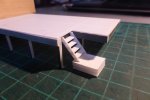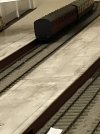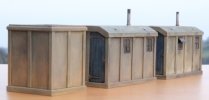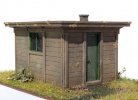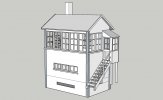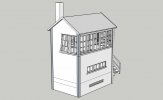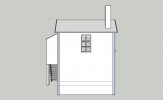And 11 weeks later, the Banff goods shed is complete - or as complete as anything ever is. Although it's a much simpler structure than the station building, it's still surprising where the time goes.
Here it is, in company with the station building and an incomplete Parkside van.
View attachment 210296
I'm generally happy with the end result, although the colours are too flat/even/saturated/something. I'm not sure what's wrong, nor am I sure what to do about it. The shed also needs guttering , downpipes and bedding-in, which will disguise several millimetres of the bottom of the model. One day, perhaps.
Construction is Slaters 2
.16 mm planking over 1.5mm card with ScaleScenes slates and bricks and details cut from plasticard.
Here's some detail shots.
View attachment 210297
View attachment 210298
View attachment 210299
View attachment 210300
Despite being barely visible on the layout, I'm most pleased with the stairs. Constructed from plasticard, these were attempted as a practice for the highly visible signal box stairs.


